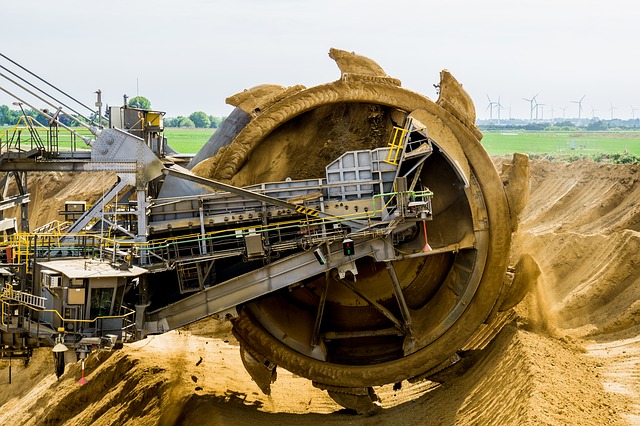
In the not-too-distant future, battery technology will power the world. As I wrote in part one, much like oil has dominated energy geopolitics, critical minerals like cobalt—essential for batteries—will dominate
tomorrow’s race for energy security. That requires that governments think about strategies to secure access to these minerals, just as they did with oil.
Thus far, Western countries have trusted in the invisible hand of free markets. But this hasn’t been working. Scarcities in critical minerals—caused by high demand and supply problems—is already affecting consumers such as tech companies in the supply chain ‘downstream’. The effects could spread as energy grids and transport
increasingly rely on ‘green’ electrification—which relies on mineral availability.
As countries increasingly rely on battery tech for energy needs, uninterrupted access to critical minerals will become essential. At that point, the logic of energy geopolitics—where control of resources becomes a coercive tool—could become a factor. In 2010 Japan—a big manufacturer of consumer electronics—experienced a taste of that kind of future resource competition when China deliberately
cut export quotas for rare earths.
And even those countries that possess deposits of critical minerals cannot simply rely on free markets. Resource-rich countries rarely find it economically viable to produce, refine and manufacture products from domestically mined minerals. As
The Economist pointed out in a recent article, the idea that Wakanda—the homeland of Marvel Comics superhero Black Panther—successfully refines ‘vibranium’ to achieve technological supremacy and energy self-sufficiency is pure ‘fantasy and wish-fulfilment … it is as if Norway had a monopoly on oil, petrochemicals and plastics’.
Rather than rely on the free market, Western governments could adopt the Carter Doctrine approach. Just as the US government made securing access to oil a cornerstone of US foreign policy, governments could make gaining and maintaining access to critical minerals a key policy objective. Certainly China is already pursuing a multifaceted strategy to secure direct access to critical minerals across Africa.
In March for example, China
tried to buy a 32% stake in Chilean lithium-mining company SQM SQM_pb.SN. The Chilean government has asked anti-trust regulators to block the move, arguing that it would give China an unfair global advantage in battery technology development. If the Chilean government fails, then China will control
70% of the world’s lithium supply. For countries concerned about their future energy resilience, such an outcome should be unacceptable.
But the Carter Doctrine approach has costs. Witness the bloody history of oil: major oil producer Saudi Arabia is a close US ally despite its terrible human rights record. And oil was
probably an important factor in the decision to invade Iraq.
The concentration of critical minerals in dangerous and unstable locations—such as the Democratic Republic of Congo—is likely to create trade-offs that would be just as unpalatable. Seeking energy security in that way means using hard power and potentially implicitly condoning the actions of dictators.
There’s a third option: domestic geological exploration. That approach gives states control over their own requirements and insulates them from supply disruptions. And it wouldn’t require that governments get their hands dirty. Instead, they could create incentives for mining companies.
What could governments do? First, they could define which
minerals are really critical and are available within their borders. For example, Australia holds approximately
14% of global cobalt reserves.
Second, government can provide better mapping of deposits. Critical minerals are found in every country, but there’s not been a lot invested in trying to find them. Sediment and rock hides deposits,
making mapping difficult and discovery expensive. As a result, mineral deposit mapping is incomplete. One senior policymaker from the Energy and Minerals Division in the United States Geological Survey noted that the US has
better maps of Afghanistan’s geology than it does of its own geology.
Third, governments can set the regulatory environment and give companies incentives to pursue riskier investments that don’t have immediate pay-offs. Left to their own devices, companies may wait for an upswing in prices before looking for critical minerals. But the lag between discovery and production can be
more than a decade. In addition, the costs of discovery are going up. One Australian mining report found that discovery costs this decade are
50% higher than in the last decade.
So governments need to think well ahead about their needs in the face of critical mineral scarcity and find ways to encourage exploration and development even in slow periods. US President Donald Trump’s
executive order last December recognised as much. It ordered the development of a national strategy by 18 June 2018 to define critical minerals, speed up domestic discovery efforts and improve the regulatory environment for critical mineral exploration.
Do these three things and resource-rich countries like Australia will have big economic opportunities. Australia only just got into the cobalt game and has already signed
a major deal with a South Korean battery maker—contingent on production starting before 2020. But it’s unclear whether such production targets are possible, and whether the Australian public would be willing to accept the significant environmental costs that such mining incurs.
This is where an informed democratic debate is needed. Today out-of-sight mining companies in poorly regulated areas of the world bear the environmental, moral and political costs of rich-world purchases of consumer electronics. If Western countries are going to ramp of domestic production of critical minerals, their governments need to explain that we cannot build solar panels or run electric vehicles without digging up the earth. And then we’ll need to have a difficult, informed and realistic conversation about the opportunities, costs and opportunity costs that a battery-powered future holds.
 Print This Post
Print This Post